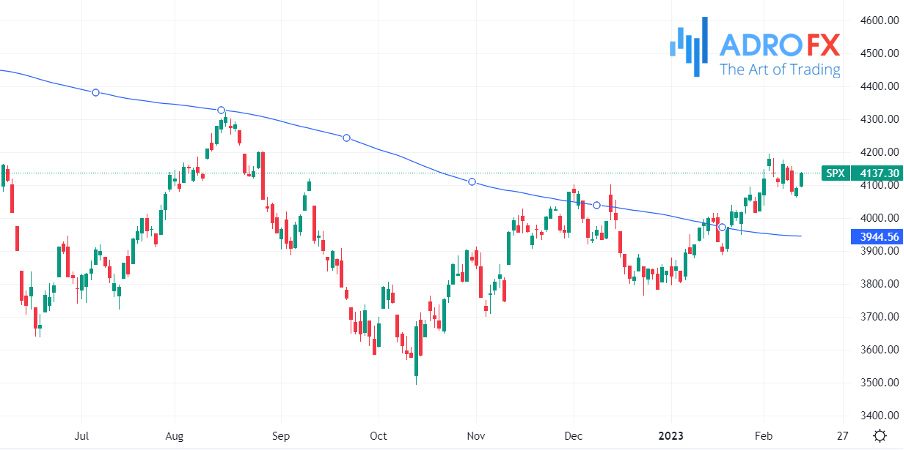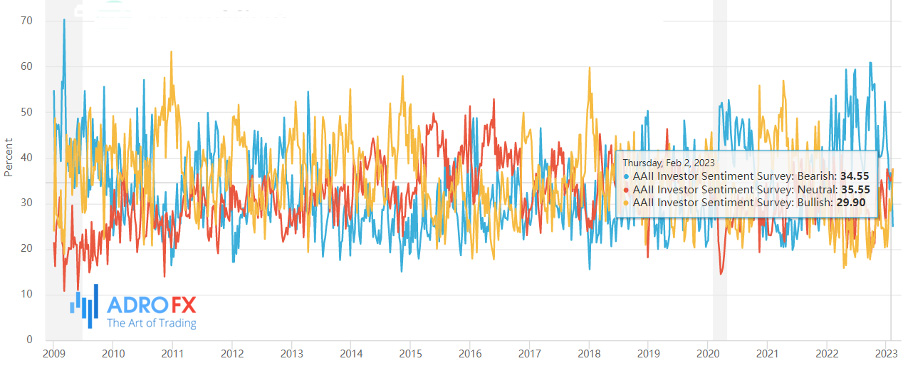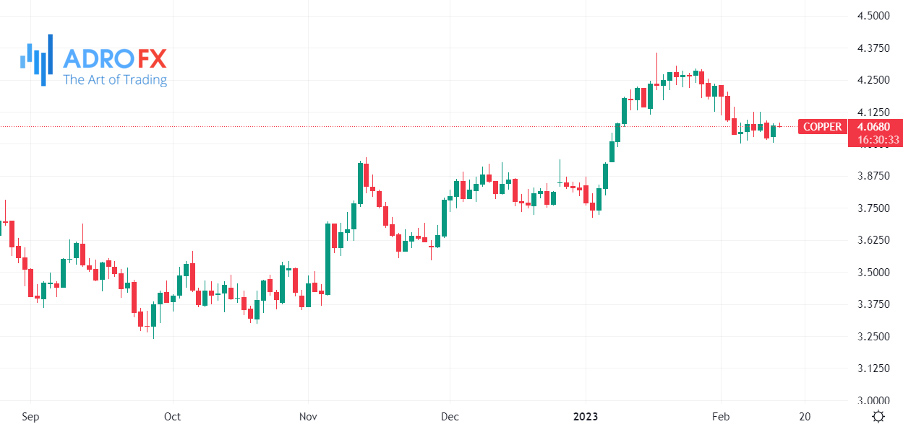Bullish Sentiment Intensifies While Bearish Sentiment Reaches Decades Low | Daily Market Analysis

Key events:
- UK – Average Earnings Index +Bonus (Dec)
- UK – Claimant Count Change (Jan)
- USA – Core CPI (MoM) (Jan)
- USA – CPI (YoY) (Jan)
- USA – CPI (MoM) (Jan)
After a very positive start to the year in global equity markets, many investors are wondering if there is now a fundamental shift in investor sentiment.
Apparently, this is indeed the case. Optimism has returned to the markets. But we are not saying that because of the latest AAII data on investor sentiment. As it turns out, investors have closed $300 billion in bearish positions, with retail investors buying stocks again after a year of sluggish activity.
As of the end of January, retail investors accounted for 23% of total market volume in buy orders for stocks and ETFs, up from a previous high of 22% during the 2021 rush around meme stocks.
We all know how important the 200-day Moving Average (MA) is in the markets. They are a reliable indicator of price strength and weakness.

Speaking of the S&P 500, that index surpassed its 200-day MA in late January after a pullback. The index rose from 4012 to 4195. However, overbought has caused recent dips like last August.
Since World War II, the S&P 500 has risen more than 5% in January after falling 10% or more the previous year only twice, in 1967 and 1975. This shows how interesting January has been in the current context.
While 2022 has been a challenging year for stocks in general and U.S. stocks in particular, it does not take away from our optimism for 2023. Since 1928, the S&P 500 has averaged an annual return of +9.7%.
In other words, the stock market, as history shows, is the best long-term investment. One dollar invested in stocks in 1802 would be worth $705,000 in 2012. The same dollar invested in bonds would be worth $1780, and $4.52 in gold.

The share of bullish sentiment, that is, expectations that stock prices will rise over the next six months, rose 7.6 percentage points to 37.5%. That's the highest level of optimism since December 30, 2002 (37.7%).
It was also the first time in 58 weeks that the indicator reached its historical average of 37.5%. The share of bearish sentiment, that is, expectations that stock prices will fall over the next six months, fell 9.6 percentage points to 25%. This is the lowest level of pessimism since November 11, 2002 (24%). The indicator, meanwhile, is below its historical average of 31%.
The recession in the world economy may not be as deep and prolonged as was expected just a few weeks ago, as the Chinese economy is rapidly gaining momentum and inflation in the USA has begun to decline. The International Monetary Fund (IMF) has even improved its forecast for the global economy for 2023.
Some factors are now allowing us to mitigate fears:
- The risk premium on speculative-grade bonds is at its lowest level since the second quarter of last year;
- U.S. job growth accelerated in January and the unemployment rate reached its lowest level in more than 53 years;

- Copper prices are up +8.1% since the beginning of the year. Copper is considered a leading barometer of the economy (it has even been dubbed "Dr. Copper" on Wall Street).
Let us not deny that some very strong companies are downsizing right now. But let's not forget that many of them are from the technology sector. These companies were actively expanding staff during the coronavirus pandemic, so their situation does not reflect the state of the economy.









